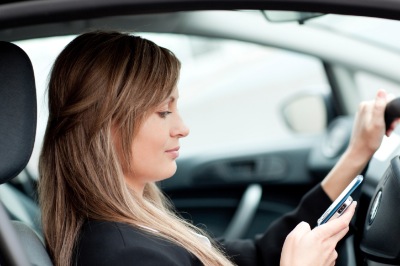Texting times

 It’s very tempting – the traffic is hideous, you’re running late and your cellphone is on the seat next to you – so you send your date an SMS. According to a Facebook poll, this is standard practice for 48% of drivers aged l8 to 24 who freely admit to sending or reading SMSes while driving.
It’s very tempting – the traffic is hideous, you’re running late and your cellphone is on the seat next to you – so you send your date an SMS. According to a Facebook poll, this is standard practice for 48% of drivers aged l8 to 24 who freely admit to sending or reading SMSes while driving.
There’s no real harm in banging off a quick SMS while behind the wheel – right? Wrong. In July 2006 truck driver Adrian Burrows, 4l, crashed into a car and killed the driver while reading a cellphone message. In June 2007 student Bailey Goodman, 17, crashed into a truck, killing herself and her four friends – and cellphone records showed that an SMS had been sent from her phone moments before the collision.
Research into driving and SMSing paints a sombre picture. A study in the UK by the Transport Research Laboratory found that reaction times deteriorate by more than one-third if you send SMSes while driving. This is far worse than driving while at the legal alcohol limit (your reactions are 12% slower) or under the influence of marijuana (21% slower).
A report published in 2005 by SA’s Road Traffic Management Corporation found that almost 80% of crashes could be attributed to ‘human factors’ such as being distracted. SA forensic accident investigator, Stan Bezuidenhout, says that being distracted by SMSes means less of your brain’s processing ability is allocated to driving. There is also a good chance that you’ll drift out of your lane as your steering control deteriorates by a whopping 91% while you’re tapping out your SMS.
Sending SMSes while behind the wheel has three negative effects: it takes your mind off your driving, you lose physical control (one hand is on the cellphone) and you stop looking at the road. As a result, braking time increases from 1,2 to 1,6 seconds. At a speed of 100km an hour you’ll travel an additional 12,5m before even beginning to brake. The UK study concluded that ‘poorer control of vehicle speed and decreased reaction times dramatically increase the likelihood of a collision.’
Plus, you tend to ignore safe following distances, which could be the difference between causing and avoiding an accident or between a fatal and non-fatal smash. And you’re less aware of what’s going on around you, which creates a window of opportunity for a potential hijacker.







